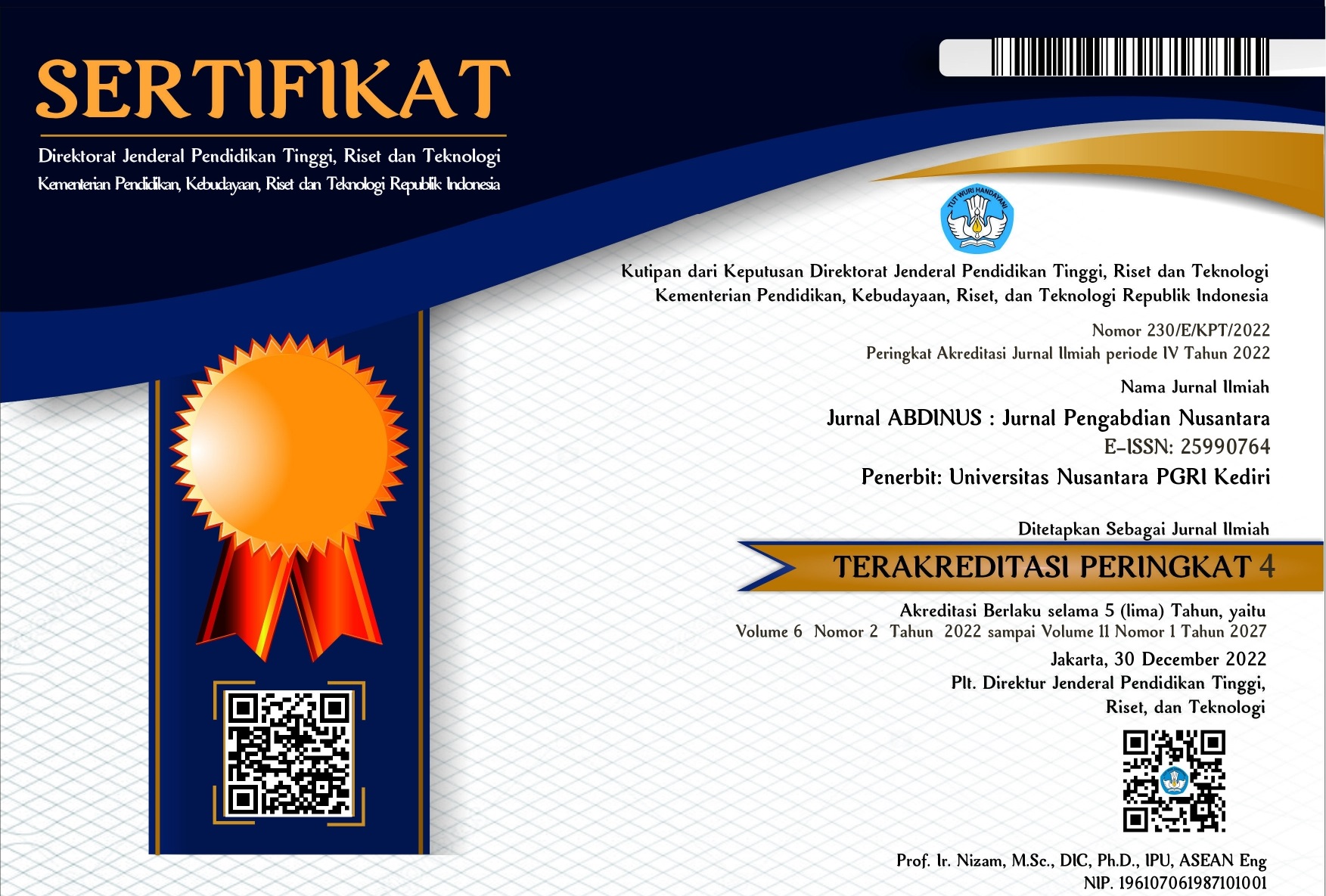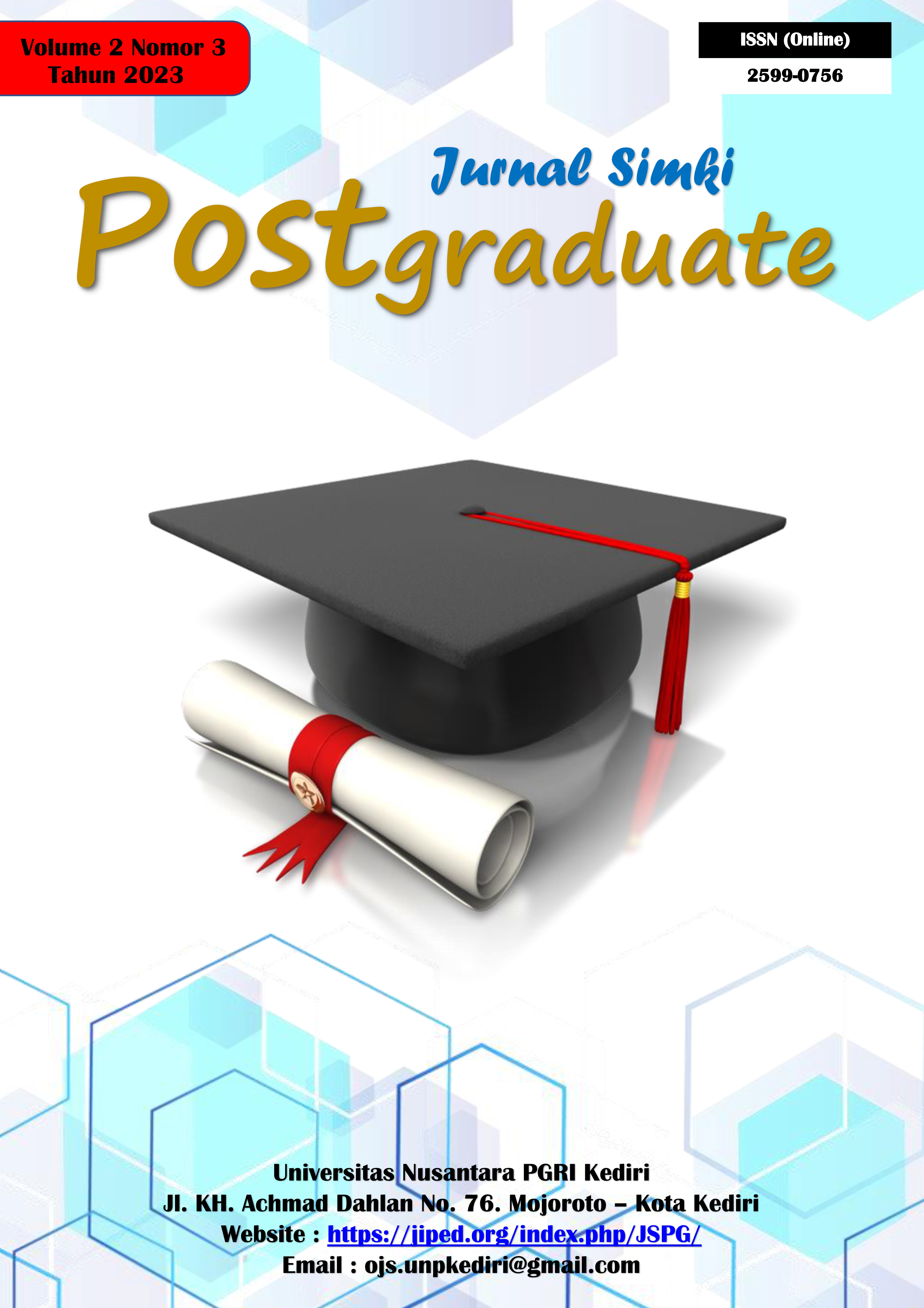Gerakan SEHATI: Memberdayakan Warga Desa Setro dalam Mengenal Faktor Risiko dan Mencegah Komplikasi Nyeri Muskuloskeletal
DOI:
https://doi.org/10.29407/ja.v9i2.23602Keywords:
Sedentary lifestyle, Unbalanced diet, Musculoskeletal pain, Hyperuricemia, Health educationAbstract
Musculoskeletal pain such as aches and pains is a health problem that is closely related to a sedentary lifestyle and an unbalanced diet. This study aims to analyze risk factors and provide educational recommendations based on questionnaire data from 38 respondents in Setro Village, Menganti, Gresik Regency, East Java. Descriptive methods were used to evaluate health parameters (age, BMI, blood pressure, uric acid levels, cholesterol), sitting habits, screen time, physical activity, and consumption of sweet foods/drinks. The results showed that the majority of female respondents (93%) were aged 40-68 years with a high prevalence of risk factors: 60% overweight, 10% obesity (BMI>25), 16% hypertension, and extreme uric acid/cholesterol levels (up to 11.8 mg/dL and 339 mg/dL). As many as 73% reported musculoskeletal complaints (joint pain, tingling) that correlated with long sitting habits (>4 hours/day), lack of exercise (40% never did physical activity), and daily consumption of sweet drinks (60%). The results of this study indicate that a structured educational intervention is needed to increase awareness of low-purine diets, regular physical activity (eg, elderly gymnastics/jogging), and sedentary screen time management. The conclusion of the study emphasizes the importance of multidisciplinary collaboration (medical personnel, government, community) in a healthy lifestyle and healthy diet-based prevention program to prevent musculoskeletal complications.
Downloads
References
Choi, H.K., McCormick, N., Lu, N., Rai, S.K., Yokose, C., & Curhan, G. (2021). Adherence to Dietary Guidelines and Risk of Incident Gout. JAMA Internal Medicine, 182(3), 254-264. https://doi.org/10.1001/jamainternmed.2021.7412
Dalbeth, N., Merriman, T.R., & Stamp, L.K. (2016). Gout. The Lancet, 388(10055), 2039-2052. https://doi.org/10.1016/S0140-6736(16)00346-9
Global Burden of Disease Collaborative Network. (2023). Global Burden of Musculoskeletal Disorders: A Systematic Analysis for 2019-2023. Seattle: Institute for Health Metrics and Evaluation (IHME).
Indonesian Ministry of Health. (2023). Pedoman Pelayanan Kesehatan Primer: Penanganan Nyeri Muskuloskeletal. Jakarta: Kemenkes RI.
Juraschek, S.P., Miller, E.R., Gelber, A.C., & Choi, H.K. (2021). Effects of the DASH Diet on Serum Uric Acid: Results from the OmniHeart Trial. Arthritis & Rheumatology, 73(5), 728-736. https://doi.org/10.1002/art.41589
Kementerian Kesehatan RI. (2024). Laporan Riset Kesehatan Dasar (Riskesdas) 2024: Profil Kesehatan Masyarakat Indonesia. Jakarta: Kementerian Kesehatan Republik Indonesia.
Sutanto, H., & Widyaningsih, V. (2022). Faktor Risiko Gaya Hidup Sedentari pada Komunitas Perkotaan di Jawa Timur. Jurnal Kesehatan Masyarakat Nasional, 17(2), 89-102.
Warburton, D.E.R., & Bredin, S.S.D. (2017). Health Benefits of Physical Activity: A Systematic Review. Current Opinion in Cardiology, 32(5), 541-556. https://doi.org/10.1097/HCO.0000000000000437
World Health Organization (WHO). (2020). WHO Guidelines on Physical Activity and Sedentary Behaviour. Geneva: World Health Organization.
Zhang, Y., Chen, S., Yuan, M., Xu, Y., & Xu, H. (2022). Gout and Diet: A Comprehensive Review of Mechanisms and Management. Nutrients, 14(17), 3525. https://doi.org/10.3390/nu14173525
Downloads
Published
Issue
Section
License
Copyright (c) 2025 Jurnal ABDINUS : Jurnal Pengabdian Nusantara

This work is licensed under a Creative Commons Attribution 4.0 International License.














